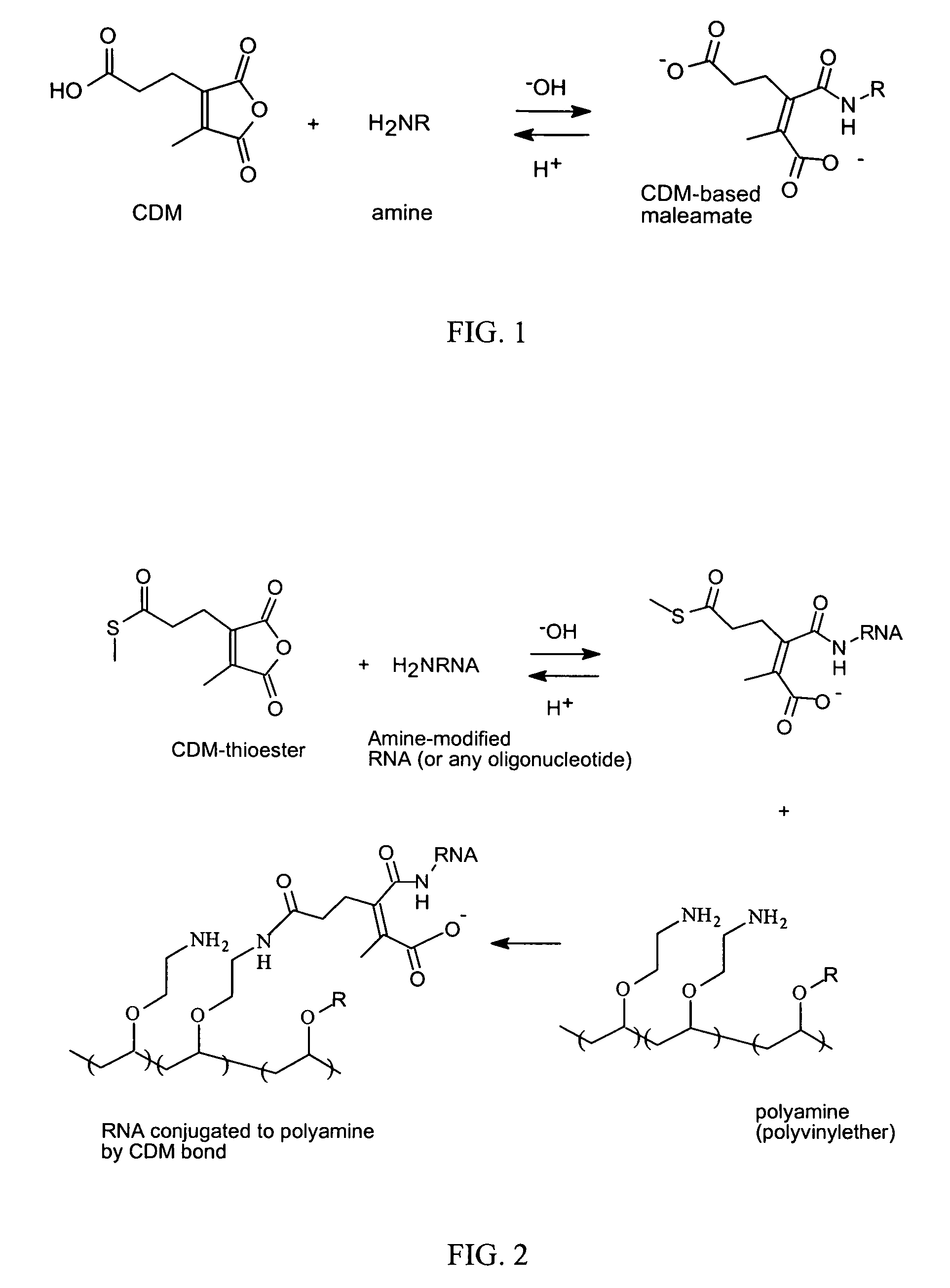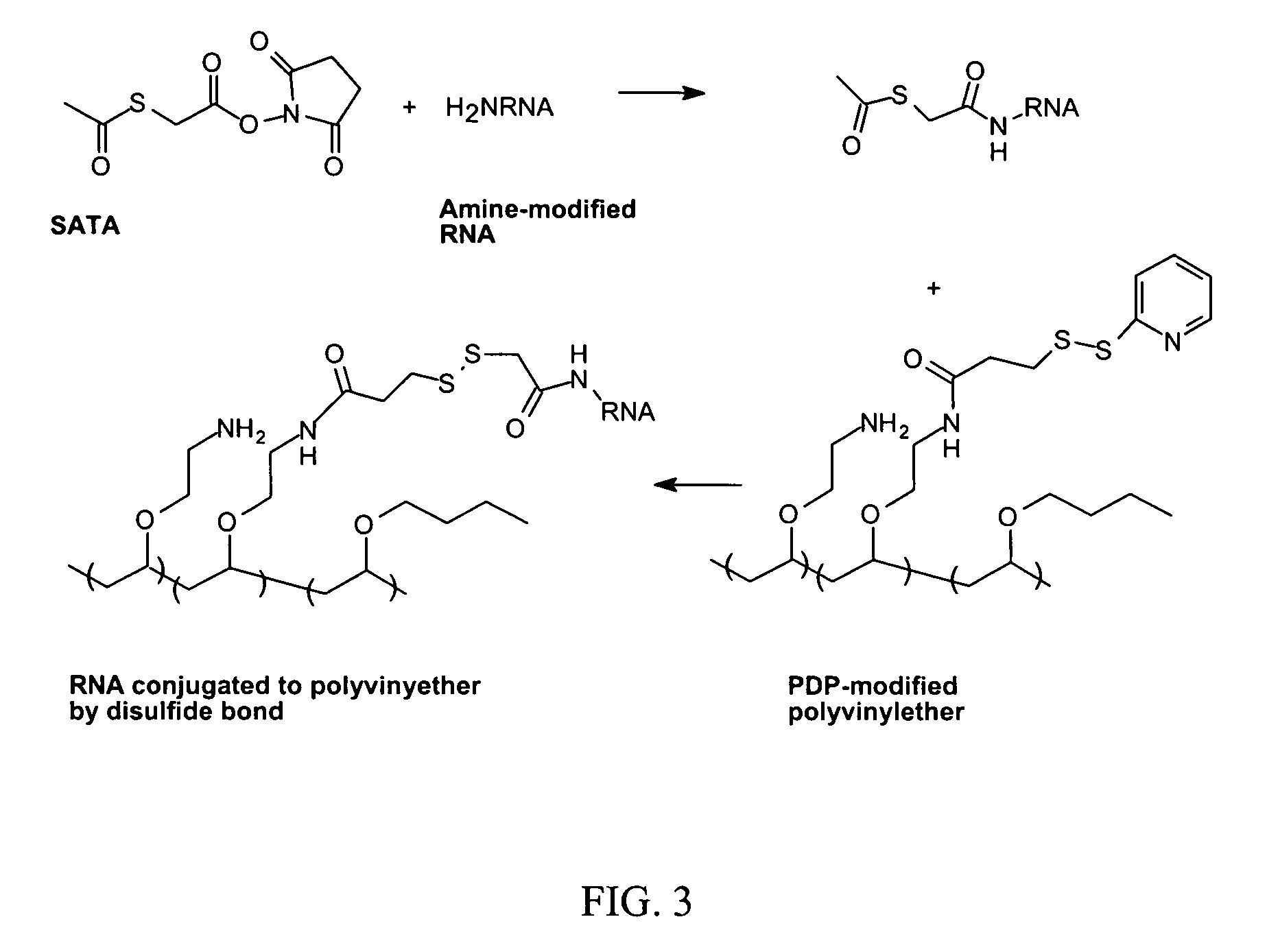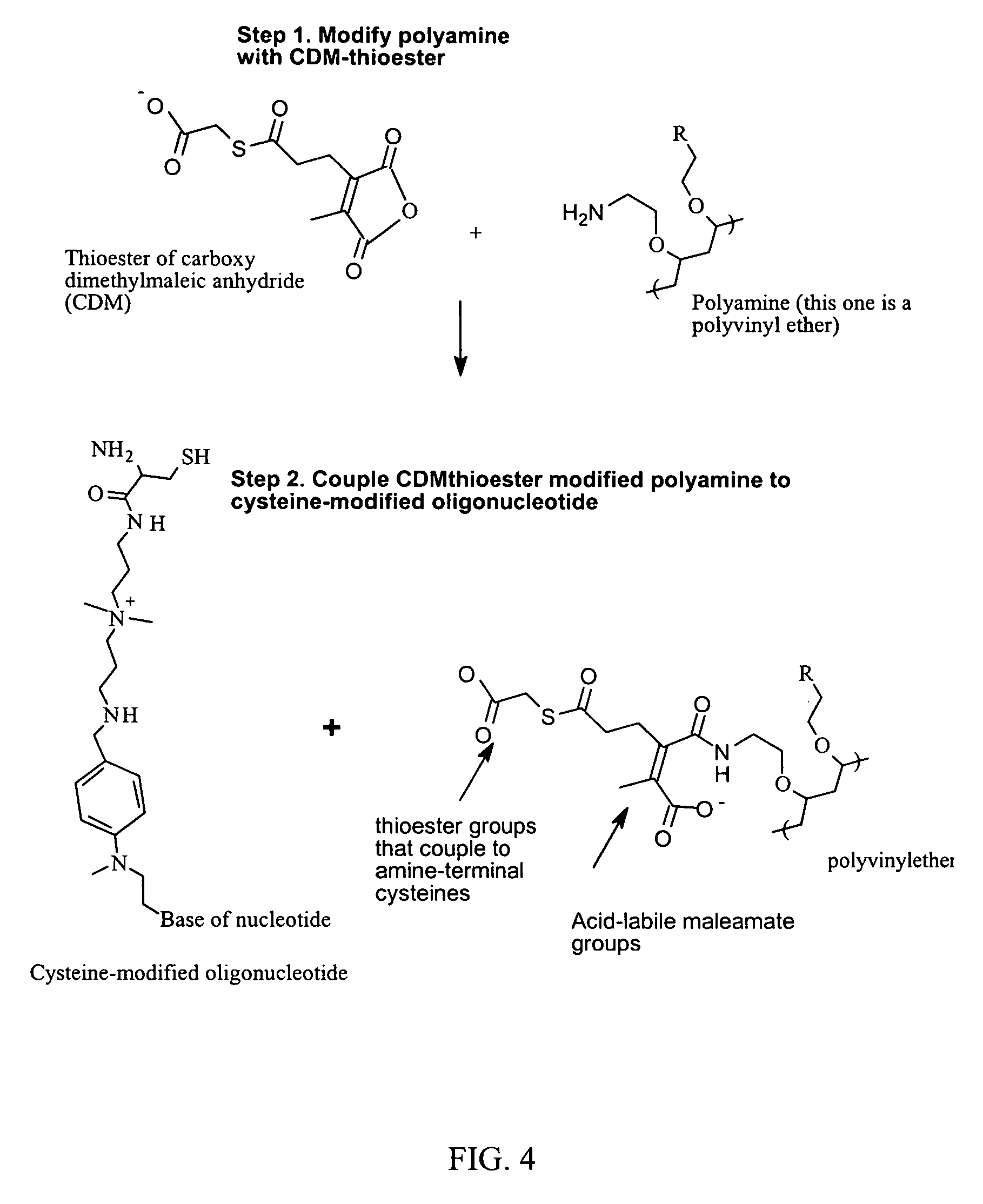Reversible attachment of a membrane active polymer to a polynucleotide
- Summary
- Abstract
- Description
- Claims
- Application Information
AI Technical Summary
Benefits of technology
Problems solved by technology
Method used
Image
Examples
example 1
[0050]Synthesis of a vinyl ether monomer: 2-Vinyloxy Ethyl Phthalimide was prepared via reacting 2-chloroethyl vinyl ether (25 g, 0.24 mol) and potassium phthalimide (25 g, 0.135 mol) in 100° C. DMF (75 mL) using tetra n-butyl ammonium bromide (0.5 g) as the phase transfer catalyst. This solution was heated for six hours and then crashed out in water and filtered. This solid was then recrystallized twice from methanol to give white crystals.
example 2
[0051]General synthesis of membrane active polyvinyl ether polymers. X mol % amine-protected vinylether (e.g., 2-Vinyloxy Ethyl Phthalimide) was added to an oven dried round bottom flask under a blanket of nitrogen in anhydrous dichloromethane. To this solution Y mol % alkyl (e.g., ethyl, propyl, butyl) vinylether was added, followed by Z mol % alkyl (dodecyl, octadecyl) vinylether. While the polymers detailed are derived from 2-3 different monomers, the invention is not limited to a specific composition of vinyl ether monomers. Polymers comprising more monomers or different monomers were readily envisioned. The solution was brought to −78° C. in a dry ice acetone bath. To this solution 10 mol % BF3EtOEt was added and the reaction was allowed to proceed for 2-3 hours at −78° C., and then quenched with a methanol ammonium hydroxide solution. The polymer was brought to dryness under reduced pressure and then brought up in 30 ml of 1,4-dioxane / methanol (2 / 1). 20 mol eq. of hydrazine pe...
example 3
[0053]Synthesis of 2-propionic-3-methylmaleic anhydride (carboxydimethylmaleic anhydride or CDM). To a suspension of sodium hydride (0.58 g, 25 mmol) in 50 mL anhydrous tetrahydrofuran was added triethyl-2-phosphonopropionate (7.1 g, 30 mmol). After evolution of hydrogen gas had stopped, dimethyl-2-oxoglutarate (3.5 g, 20 mmol) in 10 mL anhydrous tetrahydrofuran was added and stirred for 30 minutes. Water, 10 mL, was then added and the tetrahydrofuran was removed by rotary evaporation. The resulting solid and water mixture was extracted with 3×50 mL ethyl ether. The ether extractions were combined, dried with magnesium sulfate, and concentrated to a light yellow oil. The oil was purified by silica gel chromatography elution with 2:1 ether:hexane to yield 4 g (82% yield) of pure triester. The 2-propionic-3-methylmaleic anhydride was then formed by dissolving of this triester into 50 mL of a 50 / 50 mixture of water and ethanol containing 4.5 g (5 equivalents) of potassium hydroxide. Th...
PUM
| Property | Measurement | Unit |
|---|---|---|
| Mass | aaaaa | aaaaa |
| Amphipathicity | aaaaa | aaaaa |
Abstract
Description
Claims
Application Information
 Login to View More
Login to View More - R&D
- Intellectual Property
- Life Sciences
- Materials
- Tech Scout
- Unparalleled Data Quality
- Higher Quality Content
- 60% Fewer Hallucinations
Browse by: Latest US Patents, China's latest patents, Technical Efficacy Thesaurus, Application Domain, Technology Topic, Popular Technical Reports.
© 2025 PatSnap. All rights reserved.Legal|Privacy policy|Modern Slavery Act Transparency Statement|Sitemap|About US| Contact US: help@patsnap.com



